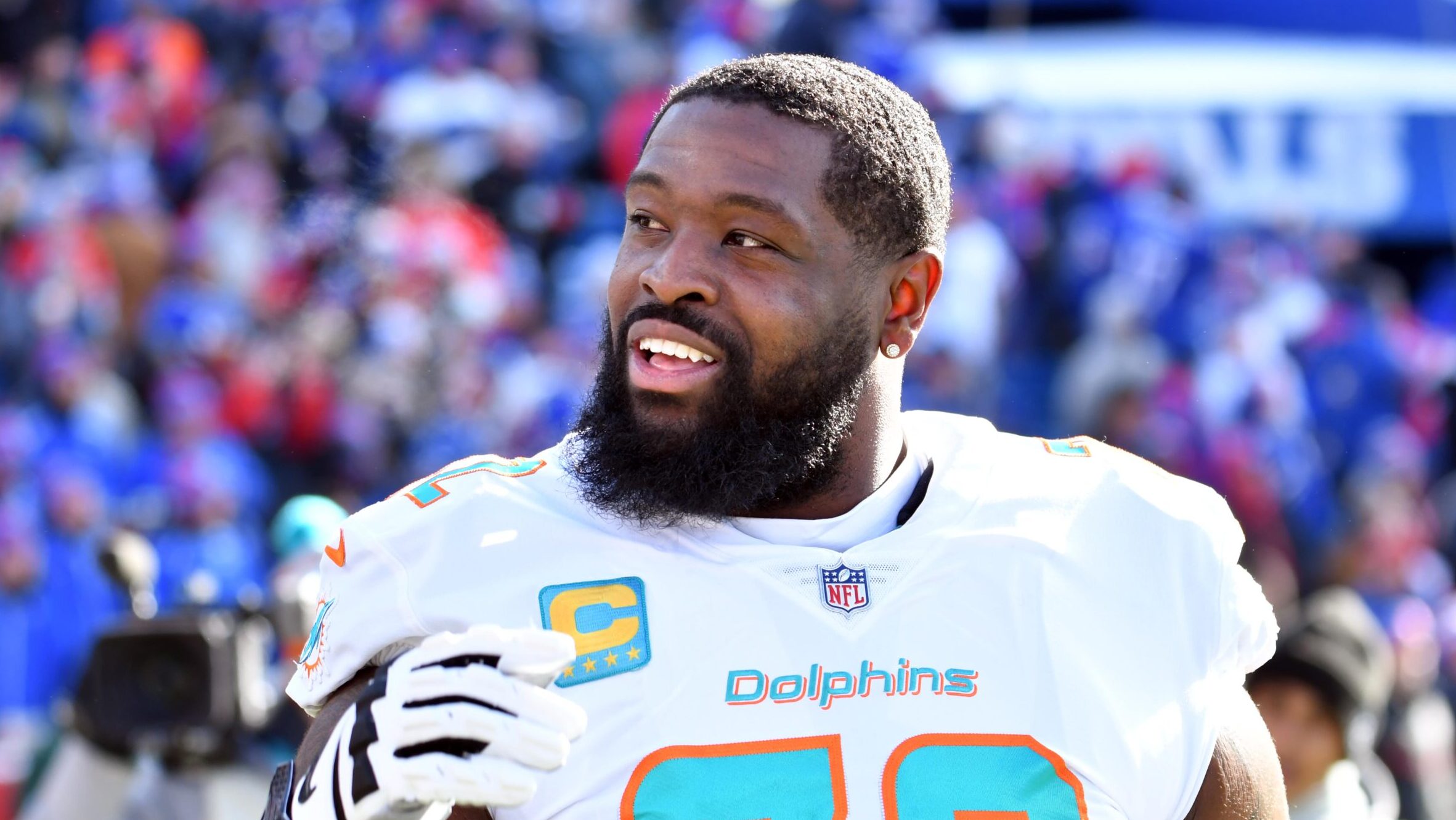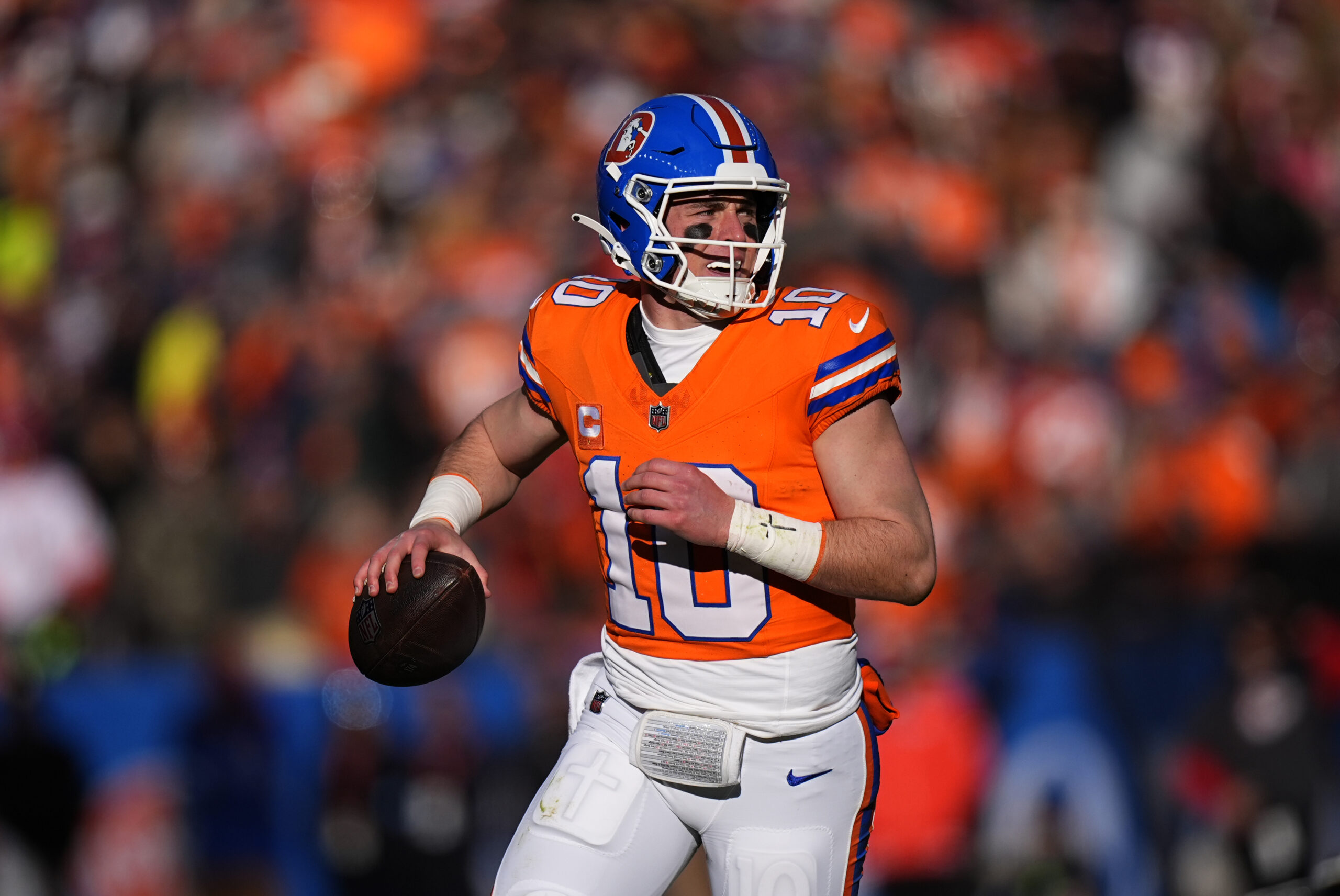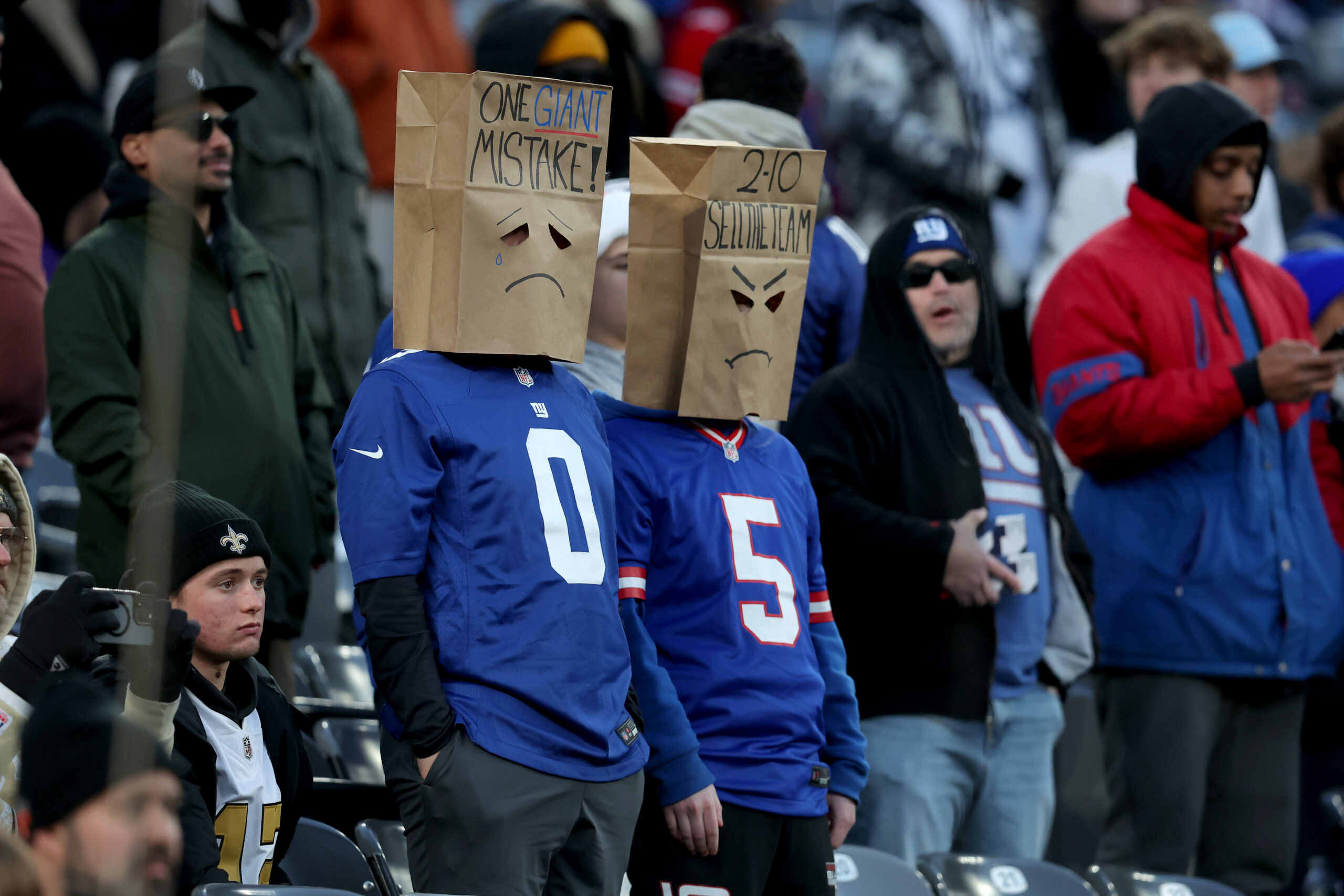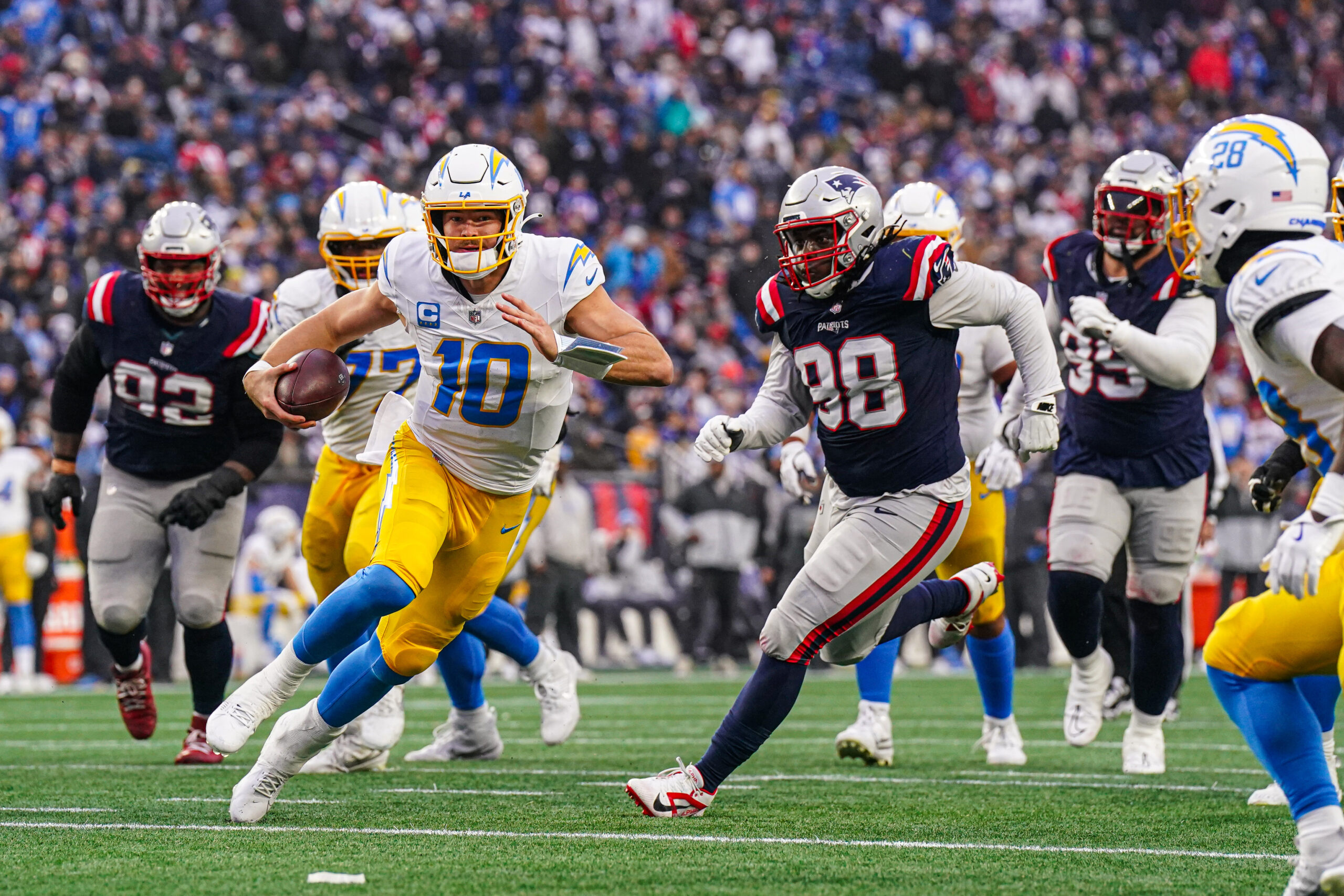NFL Analysis
February 22, 2024
8 min read
Is It Smart For NFL Teams to Build Through Free Agency?
Free agency is exciting. Sometimes, it can be too exciting for teams looking — or needing — to make a splash.
Over the past few years, there has been a shift in how teams go about big spending and how willing they are to do so. We’ve seen slightly fewer all-out spending sprees, but we’ve also seen teams more willing to go all-in for a big deal or superstar player.
There’s no universal blueprint for teams spending in free agency. Still, we can understand how teams have been successful and unsuccessful in adding talent in the offseason and what that could mean heading into the 2024 offseason.
Before we get there, let’s look at how teams built their rosters in 2023. Below is a chart of how many snaps came from players drafted by the team during this past regular season:
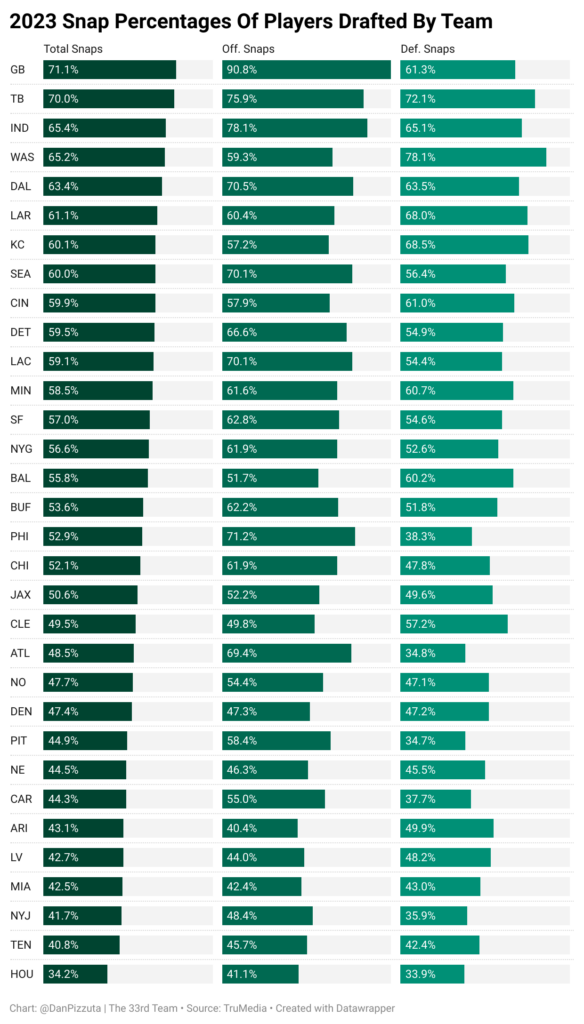
Unsurprisingly, some teams such as the Green Bay Packers have often tried to build almost exclusively through the draft with only select involvement in free agency. 2023 was an extreme youth movement for Green Bay on offense, where nearly 91 percent of the team's snaps came from drafted players, while they had the youngest offense in the league by snap-weighted age.
There were plenty of teams that saw success from a mostly drafted roster. “F Them Picks” was always a misguided description of the Los Angeles Rams, who consistently filled the gaps around their star players with mid- and late-round picks. The Rams had the sixth-most snaps from drafted players in 2023.
The Kansas City Chiefs' defense that helped propel the team to a Super Bowl victory had the third-highest rate of snaps from drafted players.
A home-grown defense is a bit of an anomaly — especially one that good. That brings us more toward the free agency discussion.
Twenty-three teams saw at least 50 percent of their offensive snaps come from team-drafted players, while that number was 17 for defense. Quarterbacks and offensive linemen skew that data, but we typically see more impact defensive free agents hit the market than we do on the offensive side of the ball. This year, eight of our top 10 and 29 of our top 50 free agents are defensive players.
Eight teams had less than 50 percent of their snaps come from drafted players on both sides of the ball. These were often the big spenders in free agency over the past few seasons.
Offseason 'Winners'
 New England Patriots
New England Patriots
The New England Patriots are at the tail end of the fallout from their 2021 offseason spending spree when they added more than $100 million in per year average annual salary to their books. That free agent class included Matthew Judon, Jonnu Smith, Hunter Henry, Nelson Agholor, Davon Godcheaux, Jalen Mills and Kendrick Bourne. Judon and Godcheaux are the only two scheduled to be on the roster in 2024. Smith and Agholor were gone before 2023, while Henry, Mills and Bourne will be free agents this offseason.
New England went from 7-9 in 2020 and improved to 10-7 with a playoff appearance in 2021. But the Patriots failed to develop a younger core and dropped to 8-9 in 2022 and 4-13 in 2023. Following this past season, the franchise moved on from Bill Belichick.
The current New England roster has top-five rates in mid-tier (non-rookie deals ranging from $5 million to $13.6 million) and low-tier (ranging from $4.8 million and lower) contracts, per Over The Cap, without much top-tier talent to build around outside of last year’s first-round pick, Christian Gonzalez, and the third overall pick in the coming draft.
 Miami Dolphins
Miami Dolphins
In 2022, the Miami Dolphins were the big free-agent spenders, looking to build Mike McDaniel’s offense. Of course, Miami traded for Tyreek Hill and signed him to a massive extension. But the Dolphins also brought in Terron Armstead, Raheem Mostert, Connor Williams and Cedrick Wilson in free agency and re-signed Emmanuel Ogbah to a big deal on defense.
Most of those players made up the Dolphins' core for the past two seasons. But with so much invested near the top of the market — Miami is first in high-value contracts ($13.7 million to $27.3 million) with more than 50 percent of its deals in that range — the Dolphins need a shift somewhere to get the cap sorted for 2024. This makes them one of the most interesting teams of the offseason.
>>READ MORE: Miami Among NFL Offseason's 5 Most Intriguing Teams
 New York Jets
New York Jets
The New York Jets also fall into the "winners" category, spending big money over the past few offseasons. While draft picks such as Sauce Gardner and Garrett Wilson are stars, the Jets have brought in high-priced players such as C.J. Mosely, Carl Lawson, Laken Tomlinson, D.J. Reed, C.J. Uzomah and Tyler Conklin.
There have been hits along the way, such as picking up Quincy Williams after Jacksonville cut him, but New York has paid handsomely for many of these players. Forty-four percent of the team's contracts are in the high-level range, which ranks fifth among all teams. The Jets' rookies have been promising, but there also haven't been hits on lower-level free agents to fill in the gaps.
Because the Jets missed badly on a quarterback in the 2021 draft, they swung for Aaron Rodgers, who was responsible for some poor signings in the 2023 offseason. New York is slightly over the cap and will need to reassess some things this offseason.
 Chicago Bears
Chicago Bears
The Chicago Bears made the most significant moves in the 2023 offseason, including a trade for DJ Moore in the swap with the Carolina Panthers for the first overall pick. The Bears also brought in Tremaine Edmunds, T.J. Edwards, Demarcus Walker, Andrew Billings and Nate Davis.
Chicago went from 3-14 to 7-10 and will get another shot at a reset with the first and ninth overall picks in the 2024 draft.
>>READ MORE: Two-Round 2024 NFL Mock Draft as Combine Nears
Nailing The Pivot
The Cincinnati Bengals were big spender during the 2020 and 2021 offseasons. They added nearly a whole new offense but also went heavy on the defense. Cincinnati signed D.J. Reader and Vonn Bell during the 2020 offseason. Then — after Joe Burrow’s rookie year — Cincinnati went harder, bringing in players such as Trey Hendrickson, Chidobe Awuize and Mike Hilton.
That spending helped jumpstart a defense that took advantage of the rookie deals for Burrow, Ja’Marr Chase and Tee Higgins, who led the offense. But the Bengals made a shift heading into 2023 as Burrow got paid, Higgins was entering the final year of his contract and Chase was ready for an extension.
Cincinnati allowed safeties Jessie Bates and Bell to leave and put more draft resources into filling those holes with rookies. Cam Taylor-Britt, Dax Hill, Jordan Battle and D.J. Turner were all drafted within the past two seasons, and the Bengals had the eighth-highest rate of defensive snaps played from drafted players in 2023.
The pivot was built in — with shorter contracts that allowed the Bengals to stock up and prepare for the future. Cincinnati still had the fourth-most expensive defense this past season, but that will drop to 17th for the contracts currently on the books for 2024.
The Houston Texans are going to be in a similar situation in the coming years. They weren’t big spenders in free agency, but they built their roster around signing veterans on one- and two-year deals over the past two offseasons. That led to Houston having the lowest rate of snaps from drafted players — and the fourth-oldest team by snap-weighted age — despite the gold struck in the 2023 rookie class.
The Texans have the most snaps set to hit free agency this offseason (44.4 percent). Houston also has the seventh-most effective cap space and could use that to aim a little higher in player caliber. It could bring in some core players, like the Bengals did to complement Burrow on the defense.
Beware Big Spending
The increase in two- and three-year deals over the past few offseasons has made it harder for individual contracts to be truly detrimental to team building. But as we’ve seen with the Patriots, bringing in multiple big contracts can hurt when the roster isn't properly built around those deals with rookie contracts and lower-level veterans.
No team can completely build through free agency, but with a plan in place and measured deals to complement the core, free agency can be a valuable piece of roster construction.
There is short-term relief for the biggest spenders, but the best teams can pick their spots with more purpose. Remember that when the money starts flying around in March.
